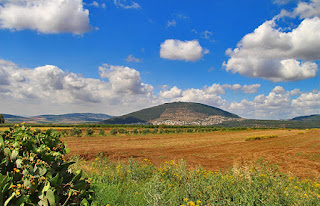Bernard was born into a high-nobility family in Fontaines, France. He was the third of seven children, with five brothers and one sister. As a member of a wealthy family with high social status, Bernard likely received a comprehensive education. His devout parents instilled in him a deep faith. At a young age, he was sent to be educated by the canons of the Church of Saint-Vorles at Châtillon-sur-Seine, located about eighty miles north of his hometown. There, he studied grammar, poetry, literature, rhetoric, dialectics, Scripture, and theology. He excelled in the study of Scripture, personalizing it through prayer. He also held a profound devotion to the Blessed Virgin Mary, continually seeking her intercession.
When Bernard was around nineteen years old, his mother passed away. This event profoundly affected him and his entire family. He had already begun contemplating religious life, and his mother’s loss might have sparked a deeper resolve to abandon worldly pursuits and live solely for God. Back in Fontaines with his family, Bernard began to reveal his intention to enter the newly formed Cistercian monastery in Cîteaux, known as the Abbey of Notre Dame. Initially, he encountered resistance, as he would be relinquishing everything his noble family could provide. However, he remained resolute and eventually gained their support. In fact, his virtue, clarity of purpose, and evident holiness inspired thirty other young noblemen to join him, including all of his brothers except the youngest, who would join him later, as would his father. His sister would become a Benedictine nun.
The Cistercian order, established in 1098, sought to return to the ideals of the Rule of Saint Benedict. During that time, many Benedictine monasteries had deviated from the Rule by becoming involved in societal and political affairs, adopting excessively elaborate liturgies, and accumulating significant land and wealth. While the Rule of Saint Benedict prescribed a balanced life of prayer and work for all monks, many monasteries had developed a two-tiered structure. Lay brothers primarily performed manual labor and fulfilled minimal prayer requirements, while choir monks, often priests, spent less time laboring and focused more on chapel and study. The Cistercians aimed to restore a single-type monk practice. In 1113, Bernard and his brothers said good-bye to their father, younger brother, and sister, and accompanied by the rest of their noble companions, they journeyed thirty miles north to the Abbey of Notre Dame in Cîteaux. Upon their arrival, they prostrated themselves before the front gate, humbly begging Abbot Stephen Harding for admission, which he joyfully granted.
Abbot Stephen, who is now recognized as a saint, spent twenty-five years as abbot. His commitment to a more faithful living of the Rule of Benedict, holiness, and administrative skills enabled the newly founded Cistercian order to experience rapid growth. Numerous young men joined during its initial years, resulting in the establishment of many new monasteries. One of these monasteries was founded in what was then called the Valley of Wormwood. It was a desolate, swampy, rugged, and inhospitable place, but soon it would be transformed and receive the name Clairvaux, meaning “Clear Valley.” Abbot Stephen appointed Bernard as its founding abbot—a role he would fill for the next thirty-eight years.
During his time in Clairvaux, Abbot Bernard earned high respect for his holiness and leadership in monastic reform. He was a prolific writer, leaving behind roughly 530 letters and 300 sermons. Among his most influential sermons is a series of eighty-six sermons on the Song of Songs. These sermons were preached to his monks over several years and exemplify the nature of his spirituality. They delve deeply into contemplation, centering on divine love, the soul’s longing for God, the experience of spiritual union, and the transformative power of God’s grace. Additionally, he wrote more than twenty longer works of a theological and contemplative nature. Notably, his treatise “On Loving God” passionately and rationally articulates the reasons we should love God to an immeasurable degree. In all of his works, Abbot Bernard sought to teach not only the mind but also to draw the heart to conversion and love. He regularly emphasized the personal nature of God as revealed in Jesus Christ, our call to mystical union with Him, the need for humility, the benefits of asceticism, and the central role that the Blessed Virgin Mary must play in our lives. He was a theologian, contemplative, and mystic whose central goals were to love God and to draw others into that same love.
In addition to his roles as abbot and writer, Bernard was frequently called upon by the wider Church, requiring much travel. He founded many monasteries as extensions of the Abbey of Clairvaux, regularly assisted popes and bishops with pressing needs within the Church, was an eloquent apologist in defense of the faith against heresies, was outspoken in his defense of persecuted Jews, assisted at Church councils, preached at the second Crusade, and played a significant role in resolving many other theological, political, and societal disputes. He was a true peacemaker and unifier. Many miracles were attributed to him. He healed the sick, cast out demons, multiplied food, calmed storms, and raised the dead. He had the charism of spiritual discernment and was able to read the inner thoughts and intentions of people. His influence was strong during his time on earth, and his voluminous writings continue to profoundly impact monastic life and all who seek to know and love God and our Blessed Mother more deeply, whom he especially saw as our Mediatrix and as the Star of the Sea who guides us through the darkness of life.
By the time Abbot Bernard died, his monastery in Clairvaux numbered about 700 monks, and he had founded at least sixty-eight monasteries. He has since been given the title the mellifluus Doctor of the Church, meaning that his words were like honey—convincing, forthcoming, elegant, sweet, and effective. When he spoke, everyone listened and responded.
Source of content: mycatholic.life














.jpg)





